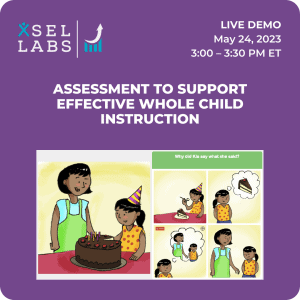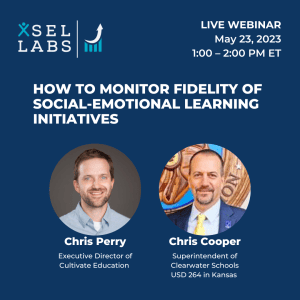The field of school-based social and emotional learning (SEL) has focused mostly on programs, practices, and strategies designed to reach everyone. Paradoxically, that has meant they are not optimally designed to meet students with higher levels of need. In this blog post, I describe this in greater detail and explore ways educators can differentiate their SEL practice to reach students who need extra help.
The Context of MTSS
To address the needs of all students, most schools operate within some version of multi-tiered systems of support or MTSS. MTSS is a continuous improvement framework within which educators make data-based decisions about what tier of instruction students will most benefit from. Universal instruction—or the general curriculum—is Tier I. Tier II usually involves extra support in class for students whose needs are not met completely by Tier I programs, often in more intensive small-group instruction. And Tier III involves even more intensive services or interventions for students whose needs are not met with Tier II supports.
For example, a third-grade student whose benchmark reading performance is low might be placed in a guided reading group to help him catch up (Tier II). Another who has a diagnosed reading disorder might receive more intensive phonics-based reading remediation outside of the general classroom (Tier III).
Where SEL Fits Well In MTSS
Where does SEL fit into the MTSS framework? The vast majority of SEL programs, practices, and curricula are designed mainly for Tier I. That is, they are designed to be implemented in the context of the general instruction to all students. This is mostly a strength, but also a limitation.
First, strengths: SEL programs are purpose-built for everyone and intended to be part of the general curriculum alongside, and integrated with, core subjects such as reading and math. When done well, we know that SEL programs and practices help all students learn skills that are important for success in school and life. With a Tier I focus, the field of SEL signals that social and emotional competencies are central for everyone, and that these competencies, like academic skills, are strengths, should be taught to everyone. This differentiates SEL from more pathology-based forms of intervention that aim to diagnose problems and help students overcome them.
Where SEL Does Not Fit as Well
In some ways, the intensive focus of SEL on Tier I is also a limitation. Although SEL is a strengths-based approach, some students come to school with a greater need to develop those strengths than can be achieved by Tier I instruction alone. In other words, some students would benefit from Tier II SEL—extra support in class for students whose SEL instructional needs are not completely met by the universal program. Others might need Tier III levels of support.
The problem is that with a few exceptions, SEL programs are not built for Tier II and beyond. Creative educators are left to their own devices to adapt SEL program materials, create their own, or use special education approaches for students needing extra help.
Ways to do Tier II SEL
Fortunately, there are ways to provide Tier II SEL support. Two programs I am aware of are suitable for Tier II SEL instruction. One is called Skillstreaming; the other SSIS-SEL Classwide Intervention Program (CIP). The two programs differ in the skills they are designed to teach; however, they share many characteristics. Both are designed to teach specific social and emotional skills. Both can be used in any Tier of instruction, including Tier II and Tier III. And both can be used “a la carte”—instead of following a specific sequence of lessons, the instructor can pick lessons that are designed to teach the highest priority skill.
This last feature is important for Tier II and Tier III. When an educator decides that a student needs more intensive and focused social and emotional support, that decision should be based on data that support such a decision. The data should speak to the specific skill area or areas the student needs to work on. Tier II and Tier III interventions should be designed to support the development of those specific skills. Because Skillstreaming and the SSIS-SEL CIP can be used flexibly, educators can pick and choose the lessons that are most appropriate to support the specific needs of students.
In a prior blog post, I described how to program alignments can help educators use our SEL assessments data to guide Tier I instruction. We have developed program alignment documents for Skillstreaming and SSIS-SEL CIP with the intention that educators who use SELweb and either of these programs, whether at Tier I or Tier II, can use SELweb data to guide how educators use these resources to tailor instruction to the areas of greatest need.
Where Do We Go from Here?
The field has more work to do to develop a seamless integration of Tier I with Tier II and Tier III resources. Some of that work is underway. My colleagues at Rush University and I are supporting investigators at the University of Alabama who have recently been awarded a large grant to develop a digital resource that incorporates Tier I SEL lessons, assessment, Tier II lessons, and on-demand professional learning resources, along with living coaching. The goal is to equip educators with the tools they need to “do” SEL at Tier I and Tier II in a way that has a measurable benefit. Our impression is that many programs and curriculum providers are starting to work on supporting Tier II and Tier III. We look forward to that evolution.



